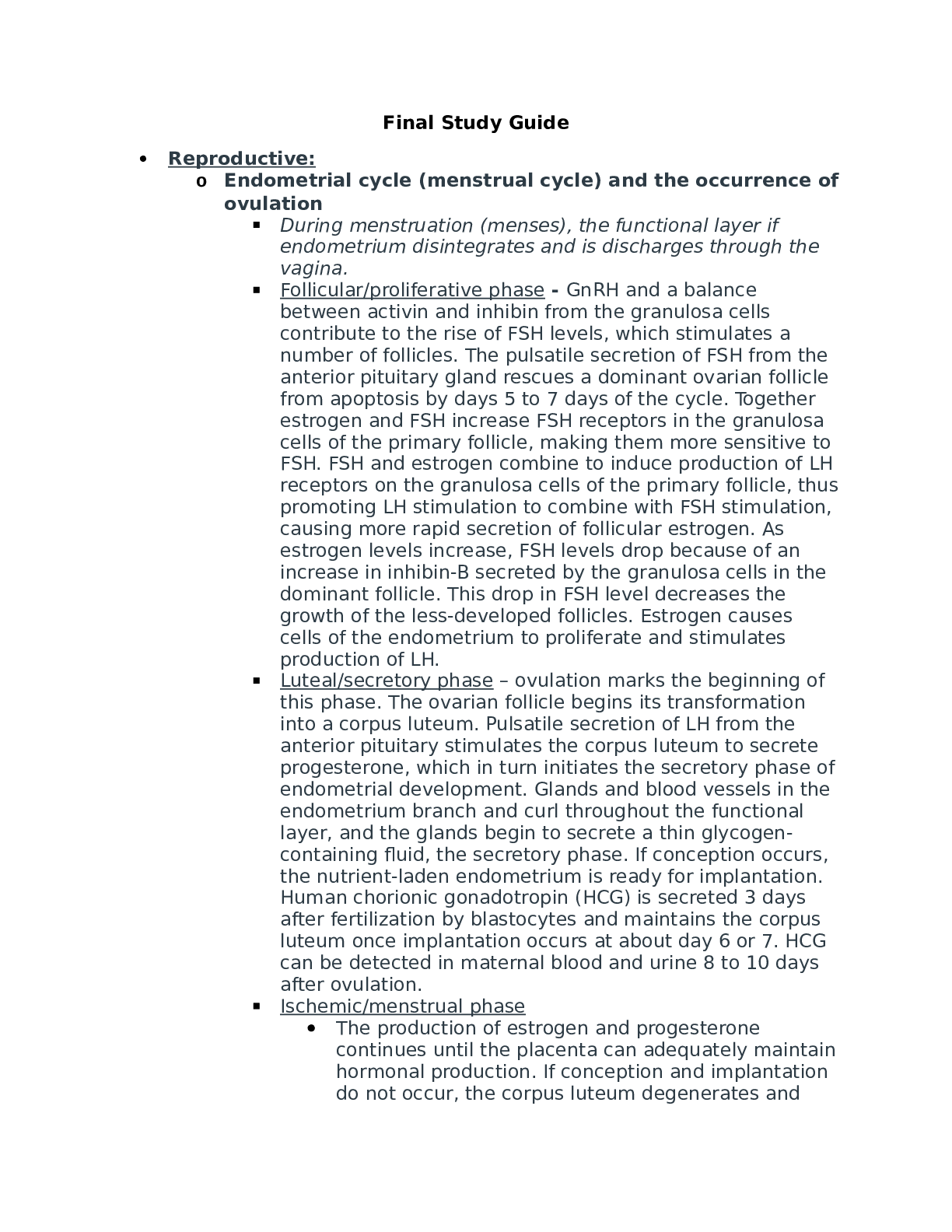Final Study Guide Reproductive Endometrial cycle (menstrual cycle) and the occurrence of ovulation
Course
Education
Subject
Chemistry
Category
Study Guide
Pages
34
Uploaded By
ATIPROS
Preview 5 out of 34 Pages


Download all 34 pages for $ 13.50
Reviews (0)
$13.50
